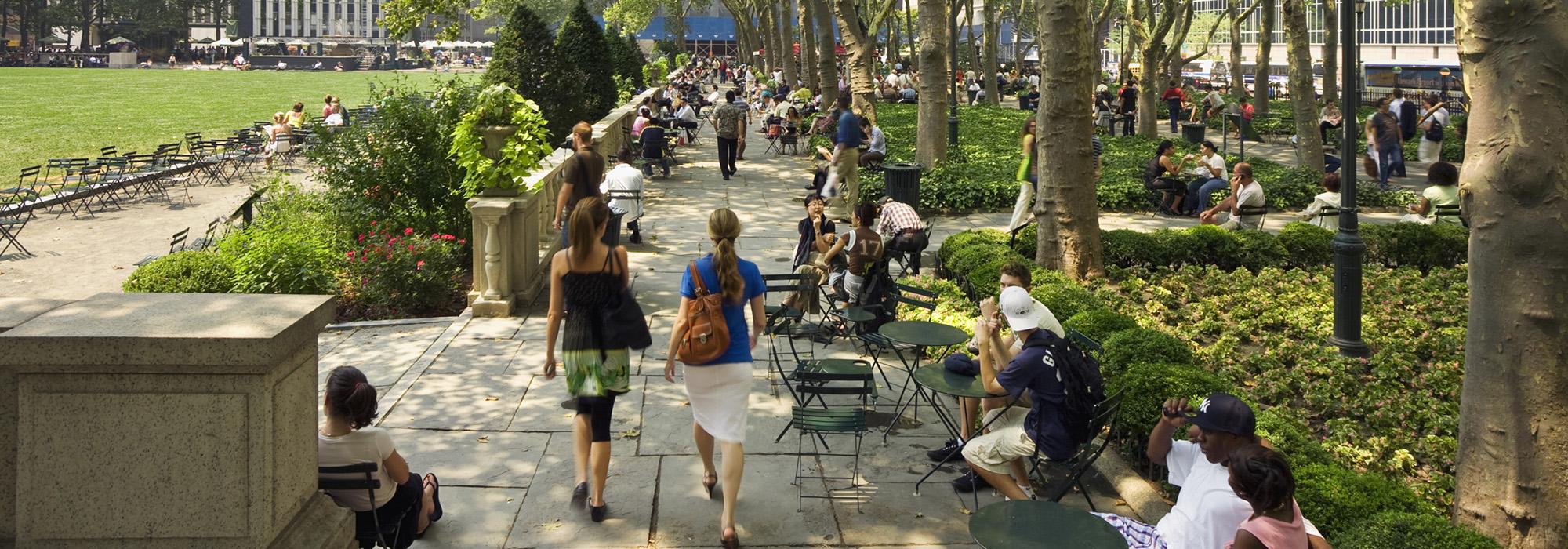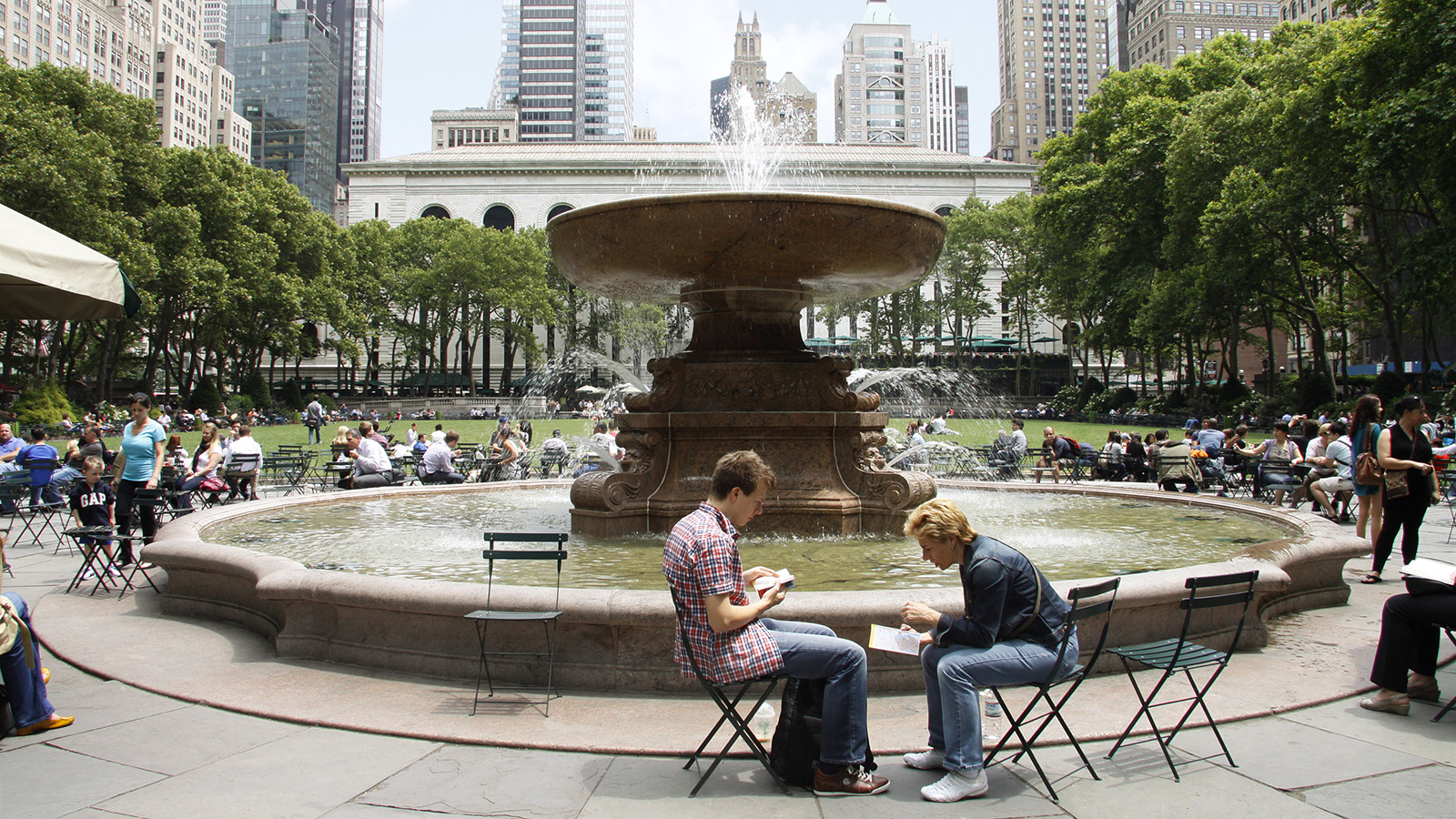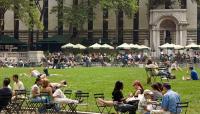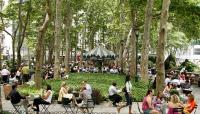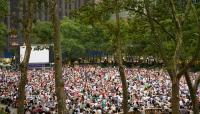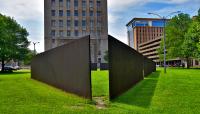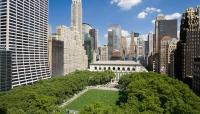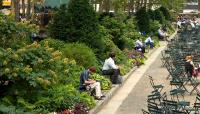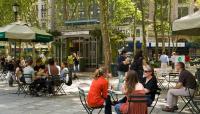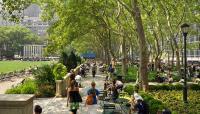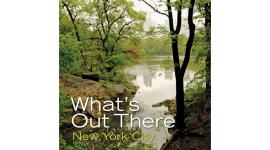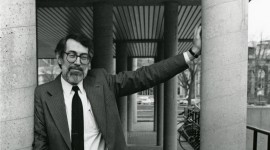Landscape Information
Occupying 9.6 acres in midtown Manhattan, this park was originally a potter’s field. Between 1839 and 1900, it was the site of the Croton Reservoir and Reservoir Square, renamed Bryant Park in honor of William Cullen Bryant in 1884. The construction of the adjacent New York Public Library between 1897 and 1912 coincided with the removal of the reservoir. The library, designed by Carrère and Hastings, created a terrace and public restrooms at the east end of the park. The firm’s Victorian design for the park, built in 1907 with planting contributions by Samuel Parsons, Jr. and Charles Downing Lay, featured curved paths, lawn panels, planting beds, benches and the Josephine Shaw Lowell Memorial Fountain designed by Charles Platt.
After years of neglect and decline, the park was redesigned by architect Lusby Simpson and executed by Gilmore Clarke of Clarke & Rapuano, M. Betty Sprout, and architect Aymar Embury II. The classical plan included a central lawn panel, formal promenade paths, stone balustrades and a perimeter planting of London plane trees. In the 1960s and 1970s, an increase in criminal activity led to a report from urban planner William H. Whyte, who recommended dramatic changes to the park. Hanna/Olin’s revitalization, completed in 1992 in keeping with Whyte’s suggestions, made the park visible from the street with more accessible entrances and lower perennial plantings, introduced moveable chairs, food kiosks, and programmed activities. The renovated library terrace gained an upscale restaurant and below-ground library space. The park was listed in the National Register of Historic Places in 1966.



